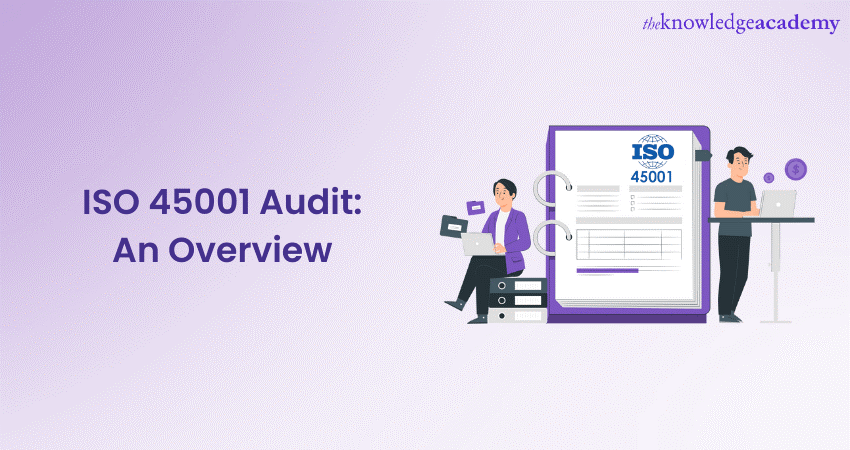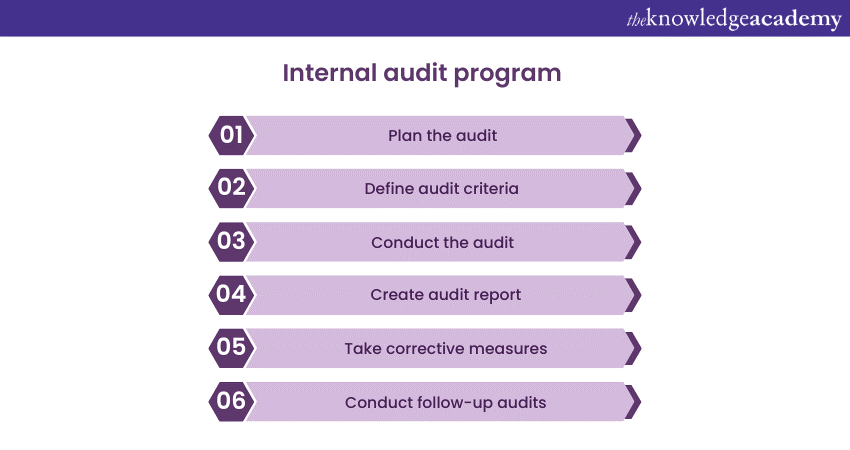We may not have the course you’re looking for. If you enquire or give us a call on 01344203999 and speak to our training experts, we may still be able to help with your training requirements.
Training Outcomes Within Your Budget!
We ensure quality, budget-alignment, and timely delivery by our expert instructors.

ISO 45001 is a globally recognised Occupational Health and Safety (OH&S) Management Systems standard. It provides a framework for organisations to manage and reduce workplace incidents effectively. ISO 45001 Audits is a crucial component of ISO implementation as they serve as a systematic and independent evaluation of an organisation's health and safety management.
According to the Health and Safety at Work report, in the UK alone, 6 million working days were lost due to non-fatal injuries at the workplace. Such incidents can be reduced with the help of standards like ISO 45001, and audits provide valuable insights into the effectiveness of the OH&S management system. This blog will provide an overview of ISO 45001 Audits, highlighting their importance, processes and best practices so that you comply with the standard.
Table of Contents
1) What is ISO 45001?
2) Overview of ISO 45001 Audit
3) Conducting ISO 45001 internal audit
4) Getting ready for external audit
5) Skills required by an auditor
6) Conclusion
What is ISO 45001?
ISO 45001 is an international standard developed by the International Organization for Standardization (ISO). It focuses on occupational health and safety. It provides a framework for organisations to establish, implement, maintain, and continually improve their occupational health and safety performance.
ISO 45001 is applicable for any industry or of any size to create a safe and healthy work environment. Implementing the ISO 45001 standard prevents work-related injuries and illnesses. It also helps to comply with relevant legal and regulatory requirements.

Overview of ISO 45001 Audit
ISO 45001 Audit refers to a structured and objective examination of an organisation's Occupational Health and Safety Management Systems (OH&SMS) standard to evaluate its conformance with the standard's requirements. The primary purpose of audits is to assess the effectiveness and efficiency of the OH&SMS, identify non-conformities, and provide recommendations for improvement.
There are two types of ISO 45001 Audits - internal and external audits. Internal audits are conducted by personnel within the organisation who are independent of the audited area. External audits are performed by independent third-party certification bodies or external auditors with no vested interest in the organisation being audited. The organisation must complete an external audit and qualify for all the requirements for the official certification.
How does audit help evaluate OH&S effectiveness?
Audits evaluate whether an organisation's OH&SMS is effectively implemented and aligned with the requirements of ISO 45001. It also helps assess compliance with legal and regulatory occupational health and safety obligations.
Audits help identify areas of improvement, including potential hazards, risks, and deficiencies in the OH&SMS. It also assesses the organisation's ability to prevent incidents, respond to emergencies, and implement corrective actions.
Learn how to reduce your organisation's risk of workplace accidents and injuries with our ISO 45001 Foundation training.
Preparing for ISO 45001 Audit
Consider following these steps to prepare for the auditing of ISO 45001 effectively:
a) Conduct a gap analysis to identify non-compliance with ISO 45001 and create an action plan to address them.
b) Develop an audit plan and checklist that outline the audit's scope, objectives, and timeline.
c) Engage stakeholders and ensure their involvement in the audit process, including top management and worker representatives.
d) Establish clear communication channels with auditors, providing them with the necessary documentation and access to relevant personnel.
Conducting ISO 45001 internal audit
Conducting internal audits is a crucial component of the ISO 45001 framework, as it enables organisations to assess the effectiveness of their OH&SMS and identify areas for improvement.

Here are key considerations when conducting internal audits for ISO 45001.
a) Plan the audit by defining the scope, assembling a competent audit team, and developing a plan and ISO 45001 Audit checklist.
b) Perform the audit by reviewing documentation, conducting interviews, and inspecting the workplace to assess compliance and identify improvement areas.
c) Prepare an audit report summarising findings, communicate them to stakeholders, and implement corrective actions.
d) Conduct follow-up audits to verify the effectiveness of corrective actions and ensure ongoing compliance with ISO 45001.
Internal audits are vital for identifying gaps, improving the OHSMS, and demonstrating a commitment to occupational health and safety. They drive continual improvement and readiness for external audits.
Learn the principles of ISO 45001, its purpose, and structure by joining our ISO 45001 Lead Implementer course.
Getting ready for external audit
External audits play a significant role in the ISO 45001 certification process. These audits are conducted by independent third-party certification bodies to assess an organisation's compliance with ISO 45001 requirements. Here are key aspects to consider for external audits for ISO 45001:
a) Find and select an accredited certification body for the audit.
b) Prepare by aligning the OH&S management system with ISO 45001, conducting internal audits, and organising relevant documentation.
c) The audit process includes Stage 1 (readiness) and 2 (on-site) assessments.
d) Stage 1 evaluates the organisation's readiness for the full certification audit. This may include reviewing the documentation, interviewing key personnel, and assessing the implementation of the O&HS management system.
e) Stage 2 audit conducts an on-site assessment to verify the organisation's compliance with ISO 45001 requirements. They review the OHSMS practices, procedures, and records and interview employees to assess the system's effectiveness.
f) Audit findings determine certification, which may require corrective actions.
g) Maintain certification through regular internal audits and surveillance audits.
Learn how to effectively conduct internal audits and assess your organisation's compliance with ISO 45001 Internal Auditor training.
Skills required by an auditor
The skills required by an auditor remain the same, whether for internal or external auditing. Auditors' qualifications and expertise significantly impact the audit process's effectiveness and credibility. Here are the key considerations regarding auditor competence and certification:
a) Competence: Auditors should possess relevant knowledge, skills, and experience in occupational health and safety management systems and ISO 45001.
b) Training and qualifications: Auditors should undergo specialised ISO 45001 Auditing training and certification programs.
c) Accreditation and certification bodies: Auditors should be associated with accredited certification bodies that maintain impartiality and technical competence.
d) Continual professional development: Auditors should continue learning to stay updated with industry practices.
e) Ethical conduct: Auditors must adhere to a code of ethics, ensuring objectivity, impartiality, and confidentiality.
Gain the skills to effectively implement and audit compliance to ISO 45001 with ISO 45001 Lead Auditor training.
Conclusion
ISO 45001 Audit is essential to getting ISO 45001 certification and complying with the standard. These audits help ensure compliance, enhance credibility, identify improvement areas, and meet legal requirements. By prioritising these aspects, organisations can create a safe and healthy work environment, foster a positive safety culture, and demonstrate their commitment to the well-being of their workforce.
Become an ISO 45001 expert by joining our ISO 4500 Training courses. Sign up today.
Frequently Asked Questions
Upcoming Health & Safety Resources Batches & Dates
Date
 ISO 45001 Foundation
ISO 45001 Foundation
Mon 23rd Sep 2024
Mon 11th Nov 2024
Mon 10th Feb 2025
Mon 19th May 2025
Mon 8th Sep 2025
Mon 8th Dec 2025







 Top Rated Course
Top Rated Course


 If you wish to make any changes to your course, please
If you wish to make any changes to your course, please


